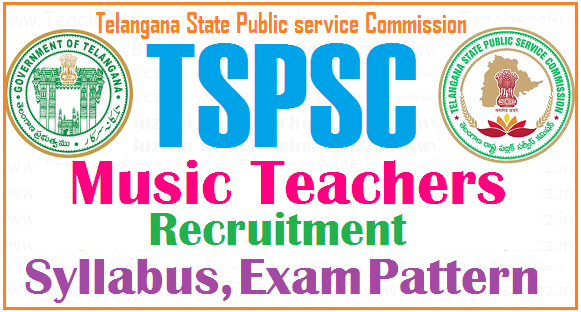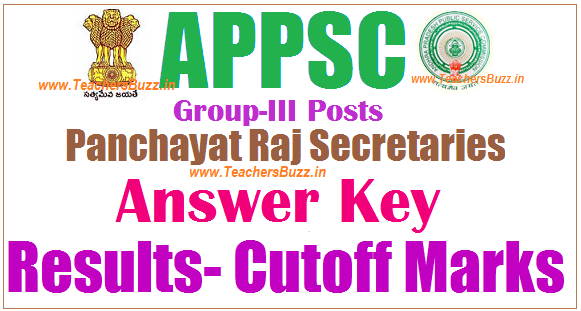TSPSC Music Teachers Recruitment Syllabus, Exam Pattern/ Scheme of Examination.
TSPSC TS Residential Music TeachersRecruitment Syllabus, Exam Pattern/Scheme of Examination, TSPSC Music TeachersSyllabus, Exam Pattern, TSPSC Music Teachers recruitment syllabus,exam pattern, TSPC Gurukulams Music Teachers recruitment syllabus,exam pattern; Scheme and Syllabus for the post of PETs in Residential Educational Institution Societies; Preliminary (Screening Test) Scheme and Syllabus, Main Examination Scheme and Syllabus for the post of Music Teachers. TSPSC TS Social welfare Gurukulam Music Teachers Posts Recruitment examination pattern, TSREIS(School Education), TSWREIS (Social Welfare), MJP TSBCWREIS (BC Welfare), TSTWREIS(Tribal Welfare), TSMWREIS (Minority Welfare) Music Teacher Posts Recruitment Scheme of exam. TS REIS’s Music Teachers Recruitment syllabus, exam scheme; tspsc tswreis, mjp bcwreis, tstwreis,tmreis Music Teachers recruitment syllabus, exam scheme details are given here.
Scheme & Syllabus-Residential Educational Institution Societies:
TSPSC Music Teachersrecruitment Syllabus, Exam pattern (Scheme of exam).Scheme and Syllabus for the post of Music Teacher in Residential Educational Institution Societies
| Written Examination (Objective
Type) |
No. of
Questions |
Duration
(Minutes) |
Marks | |
| Paper | General Studies and Music and Music Education | 200 | 180 | 200 |
| Total | 200 | |||
Paper :General Studies and Music and Music Education
Section-I: General Studies
1. Current Affairs – Regional, National & International.
2. Indian Constitution; Indian Political System; Governance and Public Policy.
3. Social Exclusion; Rights issues such as Gender, Caste, Tribe, Disability etc., and inclusive policies.
4. Society Culture, Civilization Heritage, Arts and Literature of India and Telangana
5. General Science; India’s Achievements in Science and Technology
6. Environmental Issues; Disaster Management- Prevention and Mitigation Strategies and Sustainable Development.
7. Economic and Social Development of India and Telangana.
8. Socio-economic, Political and Cultural History of Telangana with special emphasis on Telangana Statehood Movement and formation of Telangana state.
9. Analytical Abilities: Logical Reasoning and Data Interpretation.
10. Moral Values and Professional Ethics in Education.
Section-II: Music and Music Education
UNIT – I – Technical Terms
1) Nada 2) Sangeetha 3) Sruthi 4) Swara 5) Swarastanas
6) Arohana and Avarohana 7) Octave 8) Dhatu&Matu 9) Taala 10) Avarta
11) Prathama, Dviteeya and TriteeyaKalas 12) Akshara Kala 13) Matra Kala
Unit – II – Raga
1. Definition of Raga / That System
2. Classification of Ragas – Janaka, Janya method
3. Thirteen Characteristics of Raaga
4. Lakshanas of the following Raagas :Mayamalavagoula, Shankarabharana, Kalyani, Kharaharapriya, Harikambhoji, Natabhairavi, Panthuvaraali, Shanmukhapriya, Chakravaaka, Keeravani, Mohana, Hindola, Hamsadwani, PoorviKalyaani, Madhyamaavathi, Shuddhadanyasi, Sreeranjani, Bilahari&Nata and Parallel Ragas of Hindusthani Music
5. Evolution of Raaga – Different Stages;
6. Study of Gamakas
Unit – III – Tala
1) Definition of Tala; 2) Importance of Laya; 3) SaptaTalas; 4) Anga, Jati, Kriya, Graha 5) TalaDasaPranas; 6) Thirty fivetala scheme or knowledge of any ten talas of Hindusthani Music 7) Chaputalas
Unit – IV – Different Musical Forms
1) Geetha; 2) Swarapallavi; 3) Swarajati; 4) Varna; 5) Keerthana 6) Kriti; 7) Pada; 8) Javali; 9) Ashtapadi & 10) Taranga
(Or)
1) Drupad 2) Khayal 3) Tarana 4) Tumri 5) Tappa 6) Dadra 7) Chaiti 8) Hori 9) Bhajan 10) Ghazal
Unit – V – Musical Instruments
1) Tambura 2) Veena 3) Violin 4) Mridangam 5) Flute 6) Gotu 7) Nadaswaram 8) Clarinet 9) Dolu;
(Or)
1) Tanpura 2) Sitar 3) Violin 4) Sarangi 5) Shahanay 6) Harmonium 7) Bansuri 8) Santoor 9) Pakhavaz& 10) Tabla
Unit – VI – Composers
1) BhaktaJayadeva 2) NarayanaTeertha 3) Purandarasasa 4) Annamacharya
5) Ramadas 6) Tyagarajaswamy 7) MuttuswamyDeekshitar 8) Syamasastry
9) Kshetrayya 10) Swati Tirunal 11) MuttayyaBhagavatar 12) Vasudevachar
13) SadasivaBrahmendra 14) TumuNarasimhadas
(Or)
1) Meerabai 2) Tulasidas 3) Kabeerdas 4) Haridas 5) Tansen 6) Tukaram
7) AmeerKhusru 8) GopalNaik 9) Batkhande 10) VishnudigambarPaluskar
11) Baijubavara 12) Sadarang and Adarang
Unit – VII – ManodharmaSangeeta, Notation
1) Ragalapana; 2) Tanam; 3) Neraval; 4) Swarakalpana; 5) Pallavi
(Or) Creative Aspects of Hindusthani Music
6) Method of writing Notation 7) To write Notation to different forms of Music
8) Music Concert format
Unit – VIII – Origin and Development of Music inTelangana
1. Evolution of Music in Telangana Region
2. Different Musical Forms of Telangana
3. Composers of Telangana
4. Aspects of Raga &Tala in the Music of Telangana
5. Patronage of Music in different facets in the State of Telangana
Unit – IX – Seats of Music, Different kinds of Music, Musical Treatises
1. Prominent seats of Music – Tamil Nadu, Karnataka, Kerala, Telangana and
Andhra Pradesh
2. Different kinds of Music & their significance Devotional Music,Karnatak
Music,Hindusthani Music,Folk Music, Light Music and Film Music
3. Important Musical Treatises – Natyasastra, SangeetaParijata, SangeetaRatnakara, SwaramelaKalaanidhi and ChaturdandiPrakasika
Unit – X – Miscellaneous Musical aspects
1) Musical Prosody; 2) Contemporary Music; 3) Teaching of Music in Schools.
1.Syllabus and Exam Pattern for Principals
2.Syllabus and Exam Pattern for Staff Nurse
3.Syllabus and Exam Pattern for Trained Graduate Teachers
4.Syllabus and Exam Pattern for Physical Director
5.Syllabus and Exam Pattern for Physical Education Teacher
6.Syllabus and Exam Pattern for Post Graduate Teacher
7.Syllabus and Exam Pattern for School Librarians
8.Syllabus and Exam Pattern for Music Teacher
9.Syllabus and Exam Pattern for Art Teacher
10.Syllabus and Exam Pattern for Craft Teacher
11.Syllabus and Exam Pattern for Junior Lecturers
12.Syllabus and Exam Pattern for College Librarians
TSPSC Gurukulam Teaching, Non Teaching Posts Recruitment 2017
1. TSPSC Gurukulam TGT Recruitment 2017 Notification, Apply online.
2. TSPSC Gurukulam PGTs Recruitment 2017 Notification, Apply online
3. TSPSC Gurukulam PDs Recruitment 2017 Notification, Apply online
4. TSPSC Gurukulam PETs Recruitment 2017 Notification, Apply online
5. TSPSC Gurukulam Art Teachers Recruitment 2017 Notification, Apply online
6. TSPSC Gurukulam Craft Teachers Recruitment 2017 Notification, Apply online
7. TSPSC Gurukulam Music Teachers Recruitment 2017 Notification, Apply online
8. TSPSC Gurukulam Staff Nurses Recruitment 2017 Notification, Apply online
9. TSPSC Gurukulam Librarians Recruitment 2017 Notification, Apply online


